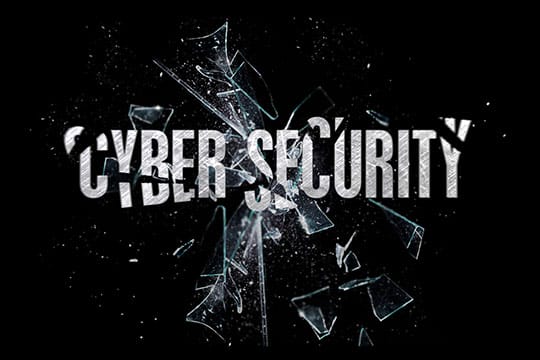Currently offering more than a billion search results on Google, the term computer viruses is one of the founding blocks of anything IT-related that springs to mind. It is one of those household names permanently ingrained in general culture. The vast majority of people using a computer today have heard of computer viruses, in one way or another.
Generations that will most likely recognize the term ‘computer virus’ will be the Millenials and Gen Z, because the period between the 90s and the 2010s was the golden era of ‘old-school’ viruses. Earlier or later generations outside that period will probably not be too familiar with the term, or at least what it originally implied through history. So, the cult status of viruses is definitely here to stay, because they have permeated every layer of technology, caused havoc, and forced industries to completely reform their security measures.
As long as there is a digital pipeline through which ‘attackers’ can crawl through, there will be safety hazards lurking on the internet. Today though, the term ‘virus’ is much less popularized, because the nature of these bugs has changed, and of course, evolved. So, as viruses evolved, antivirus software has become available. This software has likewise simultaneously adapted to protect against threats.
However, before we appreciate the most notorious computer viruses in history, let’s look at; what a computer virus is, along with some background, as well as a look back in history. Finally, let’s go deeper into each individual case and come up with some cybersecurity takeaways.
What are Computer Viruses

What comes to mind when you think about the words ‘Bug’, or ‘Worm’? For a lot of people, these words will bring up mental images of biological bacteria or viruses. For others, they will automatically think of computer hazards, because this is what they were popularly called. It turns out that, by design, a computer virus shares a lot with a biological virus.
So, defining a computer virus is a little complicated, because it has often been used as a blanket term for all software infections -which is technically incorrect. It is important to understand that viruses are different from malware such as ransomware, or spyware. In fact, malware would be the correct general term for all malicious software, including viruses. Let’s look at some definitions below, from three different sources;
Recommended for you: Top 10 Best Selling Internet Security Software (Antivirus & Security).
Wikipedia
Wikipedia states that the term ‘computer virus’ is “misused”, where it is incorrectly used to define other “malware” as well. The term itself was first used in 1985 by Fred Cohen. The key difference between a virus and other malware is that viruses do not always cause destruction, or hide themselves. A virus, in essence, injects itself into computer programs and is self-replicating, just like a biological virus. Malware, on the other hand, is an all-encompassing term for everything from ransomware (a major cybersecurity issue today) to trojan ‘worms’.
Norton
According to Norton, among the most well-known names in antivirus software, a computer virus spreads between “hosts” and replicates itself. In addition to this, Norton adds that just like a biological virus, a computer virus cannot replicate without a “host cell”, and without a “file or document” to infect. The virus will lay “dormant” in the host computer, and continue to infect until removed.
AVG
AVG, another legendary name in antivirus software, states that a computer virus is “one of the oldest types of computer threats”. The company notes that these viruses will attack your hard disk, slow your PC’s performance, and damage data along the way. AVG clarifies the confusion further, explaining that the term ‘malware’ is a combination of ‘malicious’ and ‘software’ – hence malware.
AVG has compiled a list, noting the key differences between viruses and other types of malware;
- Trojans are a type of malware that “opens the gates” for other malware, just like a trojan horse.
- Ransomware is malware that is designed to hijack files and encrypt them and then attackers demand the ransom (money) from victims in exchange for the stolen data.
- Worms are malware that is designed to hop networks.
- Adware, a malware that floods victims with “unwanted ads”, then digs holes for other malware to enter.
To add to this, Norton compiled a list of the different types of computer viruses, some of which are;
- A resident virus, that inserts itself into the computer memory.
- A browser hijacker that directs you to malicious websites.
- The boot sector virus, that is activated when an infected USB is plugged into the PC.
Timeline of The Most Notorious Computer Viruses

So, having covered some computer virus basics and technicalities, let’s take a look at a bit of historical data. The idea of the computer virus was actually discussed in a very different era. In the 1940s, John von Neumann was a lecturer at the University of Illinois. His paper, published in 1966 titled “Theory of Self-Reproducing Automata”, was the first of its kind on the reproduction of computer programs. As we can see below, viruses have advanced a lot since then in the following decades.
So, let’s look at some of the most notorious viruses in history starting from the year 2000, specifically the notorious ones that caused multi-billion-dollar damages to the industry;
1971, The Creeper Worm

The creeper worm, written by Bob Thomas, was first detected on the ARPANET (an early version of the internet) and was an experimental software that was “self-replicating”. It infected computers that ran the TENEX operating system at the time. Perhaps it doesn’t top the list in terms of notoriety, but it is worth mentioning as the grandfather of the heavy-hitters below. This worm was later deactivated by a program called “The Reaper”.
2000, ILOVEYOU

Some of us will remember the famous ILOVEYOU virus, which caused $15 billion in damage at the time. It was created by a Philippino college student, with the purpose of using online services for free. Apparently, he was not aware of the consequences of what he had made. The virus functioned by sending fake ‘love letters’, cloaked as text files. The way it worked was as soon as it infected the machine, it would send emails and replicate itself onto other machines this way. The virus quickly spread to millions of computers, after it was created.
You may like: The Growing Need for Cybersecurity: 10 Tips to Stay Protected Online.
2001, KLEZ

Probably among the top three most destructive viruses ever created, KLEZ caused about $20 billion in damages, as well as infecting close to 10% of all computers online at the time. The virus existed in several forms, spoofed and sent fake emails, as well as dominated other viruses. It essentially replicated itself and spread through networks, gaining in destructive capability each time.
2001, CODE RED

The same year that KLEZ was released, CODE RED came to be, infecting around 1 million machines. The virus would display the words “Hacked by Chinese!” on the page that was infected. CODE RED ran completely from the computer’s memory, mostly without a trace. Causing an estimated $2.4 billion in damages, the virus even ran distributed denial of service (DDoS) attacks on government websites, such as the official website of the U.S White House.
2003, SOBIG

Causing $30 billion in damages globally, SOBIG was released in variants; Sobig version A, to version F being the most severe. Once again, this virus ran via email disguising itself as authentic software. SOBIG caused troubles in the airline industry, as well as many other sectors. Interestingly, the creator of this virus was never caught.
2003, SLAMMER

Following SOBIG, that same year another virus by the name of SLAMMER was circulating the World Wide Network. This was essentially an SQL virus that caused over a billion dollars in damage at the time. It worked by attaching itself to random IP addresses, replicating itself along the way, and attacking any data that it could find. Then, the virus would launch DDoS attacks on internet servers. This virus hit banks, ATMs, and other financial institutions. SLAMMER existed almost until this day, delivering attacks again until 13 years later in 2016.

2004, MYDOOM

We come to the champion, MYDOOM. MYDOOM is the most notorious virus ever created, causing approximately $40 billion in damage at the time, still existing today in the form of hundreds of thousands of ‘phishing’ emails. The virus was so powerful that it was responsible for a total global internet slowdown. Like most of the others in the list, MYDOOM spread via email by replicating itself across millions of computers, but the difference was that it would attach infected computers to a ‘botnet’ hub, and slave them to deliver DDoS attacks on servers and websites. Even with large rewards as an incentive for cybersecurity specialists, the creator has never been caught.
2007, ZEUS

ZEUS was estimated to cause around $3 billion in damages and infected primarily in the finance sector. ZEUS was probably the dominant banking malware virus at the time, having infected thousands of companies all over the world. Another botnet like MYDOOM, but not quite as severe, ZEUS’s objective was to steal data and money. This would then be transferred to hidden bank accounts, via botnet hubs. Originating in Eastern Europe, a large group involved in the creation of the virus were mostly arrested in the U.S. To this day, it is reported that remnants of ZEUS continue to be used in modern malware.
2017, WANNACRY

WANNACRY was a combination of a virus and ransomware spyware, causing an estimated $4 billion in damages across the world. Essentially, the virus replicated itself in the form of ransomware across hundreds of thousands of computers, forcing hospitals, businesses, and governments to pay for the stolen data. If payment wasn’t received, the virus would destroy the systems and files in question.
WANNACRY was still alive and well last year, too. In September 2020, the virus hit the U.S.hospital sector, severely disrupting the medical industry.
You may also like: Should You Opt for Antivirus Software or a VPN? Let’s Find Out!
Takeaways for Always Staying Safe Online

Just like in Star Wars, there is a ‘dark side’ and ‘light side’ of The Force. If we understand The Force to be The Internet, then the dark side is malware and the light side is cybersecurity. Today, malware-makers are focused on what gets them the most return-on-investment (ROI) such as ransomware, but with generally advanced security today it is much more difficult to attack systems. Those that still do, adapt their attack vectors (types of attack) via very sophisticated malware software.
What can you do to ensure your internet safety? With regular updates on your operating system, the proper antivirus, and antimalware software as well as a good VPN, you and your business should be safe from malware.





